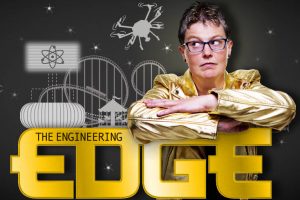Automatic homes switch on with smart new decorSteve Bush
Chrome everywhere, Sputnik-shaped TVs and flying saucer table lamps.
1950’s film-makers had a clear idea what the home of the future would look like. They would be filled with all kinds of futuristic artifacts but, above all, they would be automated. Curtains would draw themselves, lights would come on when spoken to and an electric butler would deliver the morning tea.
Now we are in the future, what do we have?
Electric garage doors and TV remote controls – that is about it. The automated home has not really happened.
Now two UK organisations are having another go. Not this time for the general housing market, but both have built technology demonstrators aimed at those who have difficulty operating within existing homes.
“They are intended to assess the appropriateness of smart technology for the elderly and people with disabilities,”said Tim Venables of the Science and Technology Research Unit of the University of Sussex, the organisation which developed the concepts for both new homes.
Although they are aimed at those with a specific needs, Venables sees a wider audience. “The homes are almost as applicable to the general population,”he said, “To create a market you need to spark the public imagination as well as specialist users.”
The homes are a house in York and a flat Edinburgh, built respectively by the Joseph Rowntree Foundation and EdinVar, a Scottish housing association.
On recommendations from Sussex, both use existing network technology.
The York house, called Smart Home, employees LonWorks from US home automation specialist Echelon. This installation combines mains-bourn data transmission with separate data bus signalling.
EdinVar’s Assisted Interactive Dwelling (AID) uses Siemen’s Instabus over twisted pair. “The University of Sussex suggested a choice of networks,”said Steve Bonner, responsible for EdinVar’s installation, “We plumped for Instabus and York went for LonWorks so that we could compare and contrast.” New licence-free frequencies More bandwidth has been allocated to licence-free radio communication. The vehicle key-fob band between 433.72 and 434.12MHz will be extended to 433.05 – 434.79MHz and will now include telemetry and telecommand applications. The cordless audio equipment band is extended from 863.00 – 864.00MHz to 865.00MHz. 868.00 – 870.00MHz has been opened for general telemetry and telecommand applications. 2.400 – 2.483GHz will be opened up to general telemetry and telecommand applications including visual image transmission.
As the homes have only just been opened, it its too early to determine if they will be acceptable in the long-term to their intended users or will tempt the general public into installing like products and creating a new market.
From the installations, a couple of things have become apparent.
One is that connecting devices from different manufacturers is not as seamless as some claim. “It would be nice to see a little more compatibility, said Bonner, “Although the equipment we used was stand-alone and there was very little effort to get it to interwork.”
Another area is functionality. “A lot of the equipment available is aimed at boardrooms, offices and industry. It is in big boxes with lots of smarts inside and too large to be fitted unobtrusively into the home. What is needed are ways to combine functions to reduce the size and cost. For instance, Rowntree developed an infrared transmitter-receiver within a smoke detector for its Smart home,” said Venables of Sussex University.
These particular homes will be deemed successful if they help the elderly and disabled people that they are aimed at. If in addition the general public is inspired, these homes will help to bring to flower a market that has never really germinated since those early days of the space race when it seemed that everything technologically possible would become reality.
Showcase for Low Power Radio Association Black box… Roy Powers of aerial consultancy ANTEC will present a paper on new antenna techniques applicable to low power radio transmission.
One of the most lively sectors of the UK’s electronic industry has its annual conference and show
in Birmingham this week. Radio Solutions ‘98 is the showcase of the Low Power Radio Association. This is the umbrella group that covers companies making equipment for the UK’s licence-free radio bands.
This year’s conference includes papers on animal radiotelemetry, CCTV surveillance and the design of transmit-receive equipment for the newly allocated band around 869MHz.
ERA technology will be presenting details of EU legislation that could allow manufacturers to self-certify equipment in a similar way that EMC matters are now handled. Some fear that self-certification will allow unscrupulous manufacturers to pollute the airwaves.
By Staff Posted on 28th October 1998 | Modified on 28th October 1998
 Electronics Weekly Electronics Design & Components Tech News
Electronics Weekly Electronics Design & Components Tech News




“The automated home has not really happened”
Didn’t see that coming, did you? LOL
~ #2016